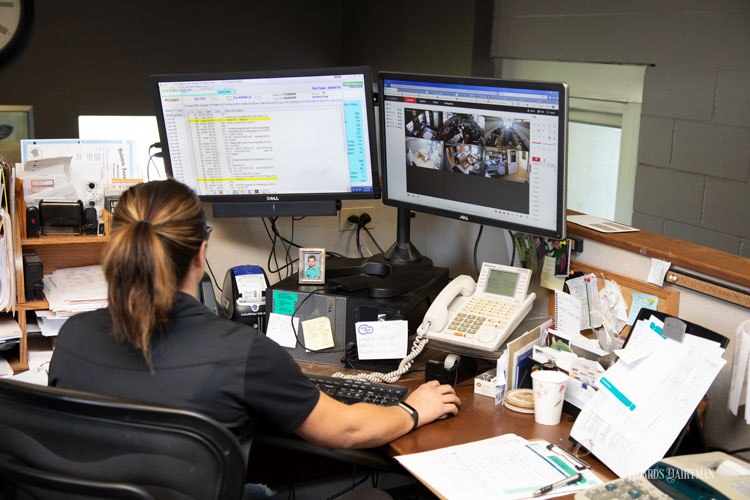
The market volatility of the COVID-19 pandemic has forced many farms to take a closer look at their financial statements and, in some cases, wish they would have done things differently.
No one could have predicted the sunny outlook on 2020 would turn upside down. Having a consistent economic management strategy has made all the difference in this wild year for the two dairy producers that joined Hoard’s Dairyman DairyLivestream on August 5.
Of course, utilizing futures contracts and insurance programs can be a regular way to provide more stability to the milk check. Gordie Jones, partner and manager of Central Sands Dairy in Wisconsin, said, “We have always been locking in feed prices and locking in milk prices to assure ourselves at least a margin.” Jones worked for 22 years as a veterinarian and then as a dairy consultant before starting Central Sands.
He admitted that committing to those programs is not always easy, particularly at the end of 2019 when milk prices were projected to be much better than they had been. “I was probably voting not to lock in milk prices in January. We locked them in, and suddenly in February and March, we looked like geniuses,” said Jones.
Limiting risk encompasses many other strategies than just protecting milk price, though. “Dairy farms face a lot of different types of risk,” said Cornell University agricultural economist Chris Wolf. “Risk management is proactively recognizing the potential for adverse outcomes and taking steps to minimize the likelihood of those outcomes or minimize the effects if they do occur,” he defined. Forward contracting feed, like Jones does, is another example.
Operating without insurance
Instead of defending against volatility, John Mueller of Willow Bend Farm in New York takes more of an offensive approach to managing risk by zeroing in on farm budgets and evaluating financial benchmarks to limit the operation’s susceptibility to risk. “Our philosophy has always been if you have a strong balance sheet, that’s your risk management,” he stated.
Willow Bend consists of three dairies milking a total of 4,500 cows, and each farm has its own budget. “You have to have a budget, and with the help of benchmarking you know where you should be in comparison to the competition,” Mueller said.
They compare benchmarks from both Farm Credit East and Cornell University, and the results of those comparisons identify what cost areas need to be analyzed more closely. Evaluations this spring identified that their target costs to address were labor, bedding, custom work, and breeding. “If you focus on something, it traditionally gets better,” Mueller believes.
He also pointed out that downturns in the market could provide leverage with your vendors to make those cuts. “It’s not a bad time to negotiate new relationships and new contracts,” he suggested.
So, could a strong balance sheet be an alternative to utilizing insurance? From a lender’s perspective, financial health still comes down to repayment ability, liquidity, and the relationship with the farm, Wolf advised. In some cases, a keen eye on expenses can help a farm meet those criteria.
An ongoing series of events
DairyLivestream will air twice each month for the remainder of this year. The next broadcast will be on Wednesday, August 19 at 11 a.m. CST. Each episode is designed for panelists to answer over 30 minutes of audience questions. If you haven’t joined a DairyLivestream broadcast yet, register here. Registering once registers you for all future events.








